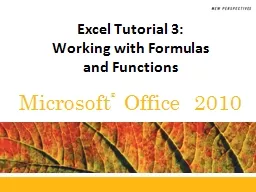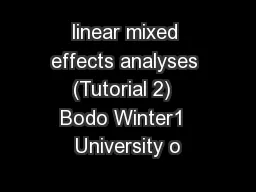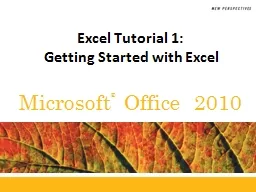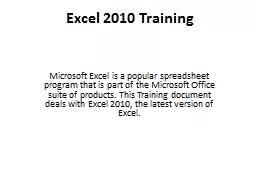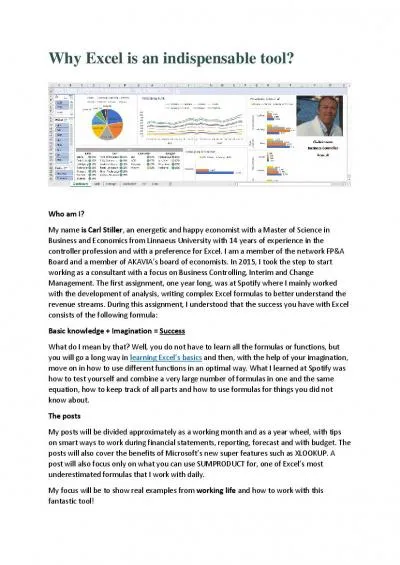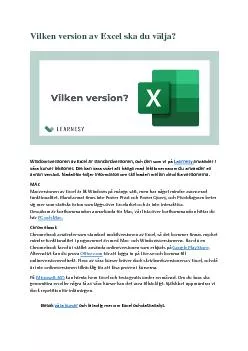PPT-Excel Tutorial 3: Working
Author : sherrill-nordquist | Published Date : 2018-09-29
with Formulas and Functions Objectives Copy formulas Build formulas containing relative absolute and mixed references Review function syntax Insert a function with
Presentation Embed Code
Download Presentation
Download Presentation The PPT/PDF document "Excel Tutorial 3: Working" is the property of its rightful owner. Permission is granted to download and print the materials on this website for personal, non-commercial use only, and to display it on your personal computer provided you do not modify the materials and that you retain all copyright notices contained in the materials. By downloading content from our website, you accept the terms of this agreement.
Excel Tutorial 3: Working: Transcript
Download Rules Of Document
"Excel Tutorial 3: Working"The content belongs to its owner. You may download and print it for personal use, without modification, and keep all copyright notices. By downloading, you agree to these terms.
Related Documents

